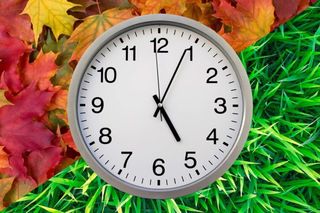Depression
The End of Daylight Savings Time and Depression
Practicing self-care helps to prevent seasonal depression
Posted November 6, 2018 Reviewed by Ekua Hagan

The ending of Daylight Saving Time (DST) —the practice of moving the clock back by one hour the first weekend in November to Standard Time (ST) —is practiced by over 70 countries around the world.
Daylight Savings Time (DST) was first proposed in 1895 by New Zealand entomologist George Hudson, based on his theory that doing so would maximize the use of the sun’s light. Canada was the first to use DST in 1908, followed by Germany and Austria in 1916 and then in 1918 in the United States.
Research on Standard Time
The ending of Daylight Saving Time (DST) to Standard Time (ST) has been shown to negatively affect our health, both mental and physical. Studies report that falling back to gain one hour of daylight in the autumn months causes reductions in sleep and increases rates of cardiac issues, stroke, cortisol production, and vehicular accidents. The good news is that as our body’s circadian rhythm adjusts to the time change, the risk of these adverse experiences greatly reduces.
However, one of the most salient findings regarding Standard Time is the negative effect it has on mood, particularly in the northern latitudes of the earth. For those of us who live with depression, this time of year requires us to practice self-care to offset the lack of feel-good sunlight. While many succeed, there are some people who cannot successfully reduce their depressive symptoms.
Try as we might to exercise, watch what we eat, and keep a healthy sleep schedule, the depressed mood, irritability, and difficulty thinking and concentrating worsens. This is a clinical disorder, one that begins and ends at about the same time every year. It's called Seasonal Affective Disorder (SAD).
Seasonal Affective Disorder
Seasonal Affective Disorder is a type of Major Depressive Disorder (MDD). This specifier of Major Depressive Disorder occurs seasonally. Symptoms of SAD include many of the same symptoms of depression: sadness, anxiety, lost interest in usual activities, withdrawal from social activities, inability to concentrate, hopelessness, and despair. The difference, though, is that these symptoms resolve each spring and tend to occur again in late fall.
I live with Persistent Depressive Disorder (formally called Dysthymic Disorder) and must take extra care during Standard Time to ensure I don't fall into what's called a double depression — a severe depression caused by two depressive disorders (PDD and MDD). When the sun sinks faster into the horizon and a crisp chill falls into the night air, I know I need to ready myself for the seasonal issues that come with Standard Time. I follow these tips personally and recommend them professionally.
Self-Care Tips for Standard Time
- Make sure you're in good physical health. Many illnesses can look like SAD (anemia, hypoglycemia, hypothyroidism, etc.), so checking in to see that you're healthy is a good way to get ready for the ending of Daylight Saving Time.
- Learn about your circadian rhythm. This is the internal biochemical cycle we all have that regulates our body with respect to sleeping, feeding, and well-being. Circadian rhythms are greatly affected by sunlight.
- Individuals with SAD tend to experience a shift in their circadian rhythm. Essentially, they have an ultrasensitive body clock that gets thrown off when exposed to less sunlight. To help reset your circadian rhythm, consider using artificial sunlight. I have a dawn-to-dusk alarm that helps me sleep and awakens me each morning during Standard Time.
- Speaking of your body clock, ditch the technology a few hours before bedtime. Blue Light Syndrome has been shown to interfere with melatonin production, the sleep hormone that makes for good, restful sleep.
- Consider spending more time outdoors. I break down my outdoor chores instead of doing them all at once (getting the mail, grabbing the trashcans, running errands, parking further away from stores, etc.) This ensures that I'm outside several times during the day.
- Use sunshine to your advantage. Sit in a pool of sunlight indoors if you can't get outside. Find a window that streams the sun, grab a cuppa, read a book, or just sit and laze about for a spell.
- Consider buying an artificial light for Bright Light Therapy if you can’t get natural sunshine. Just make sure you use the light in the morning. Using it later will interfere with your body clock.
- Keep a set sleep schedule. No sleeping in or going to bed too early. And watch those naps. Too many in a day or too long naps are no-nos.
- Standard Time can bring on carb cravings during this darker season. Be mindful to eat a lean protein, low carb diet. Keep healthy snacks on hand.
- Use aromatherapy to lift your mood. Essential oils like bergamot, peppermint, lemon, lavender, and cedar are great for an instant boost.
- If you aren't taking medications at this time, consider using antidepressants during the months of Standard Time. Doing so can help you move through the seasonal depression with greater ease.
- If you find the shift from Daylight Saving Time to Standard Time worsening your depression, reach out to a mental health specialist for further support.


